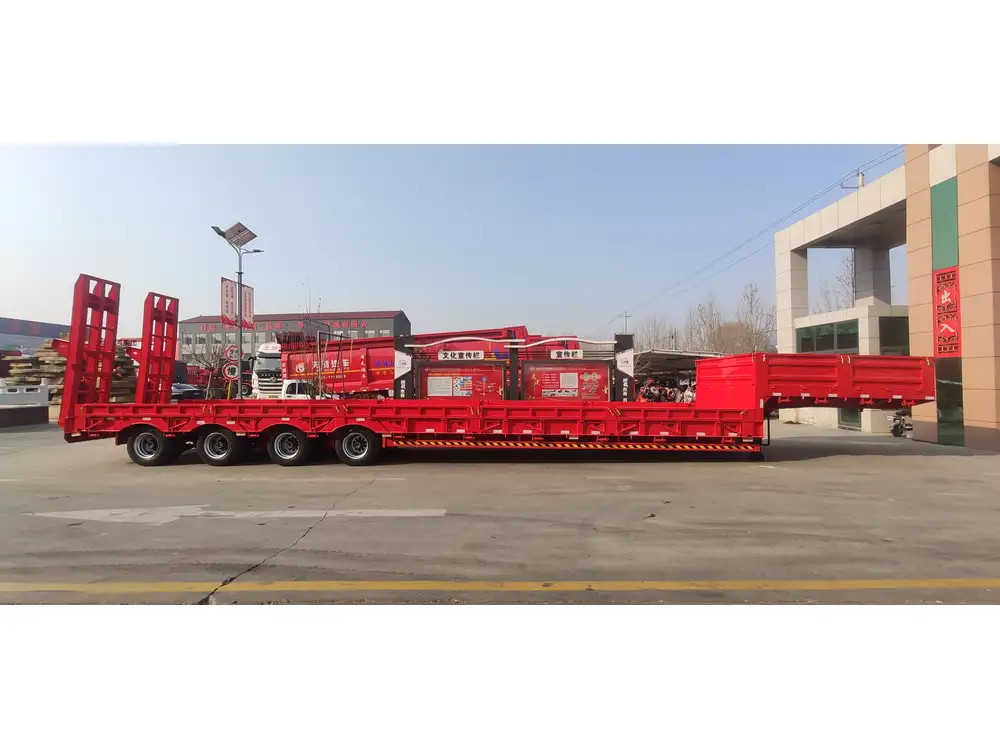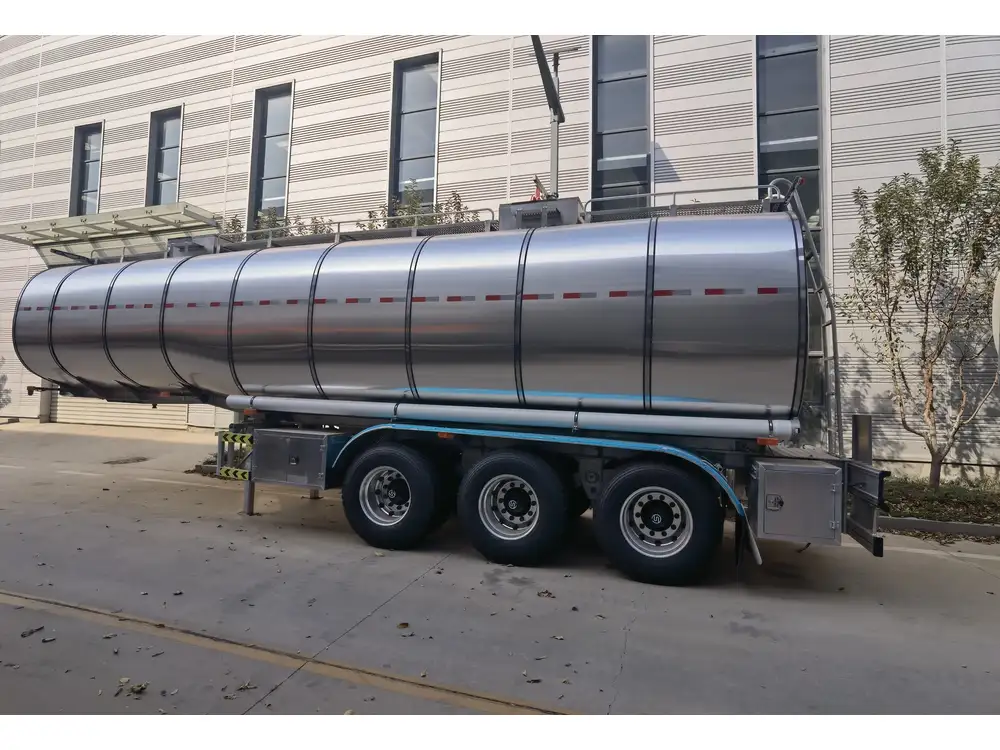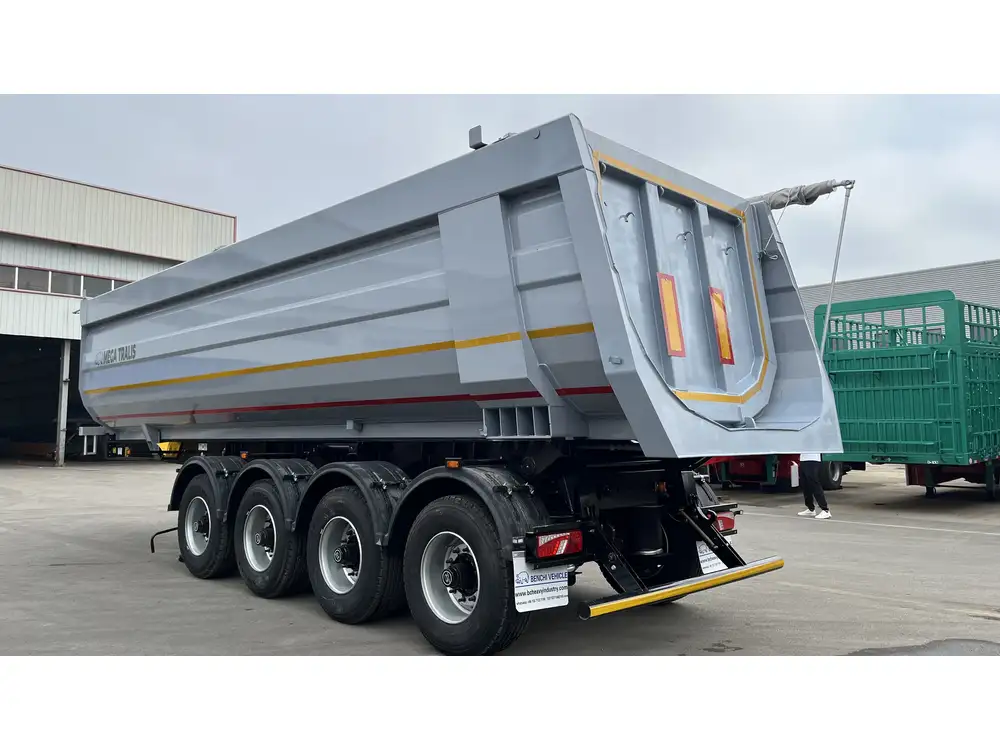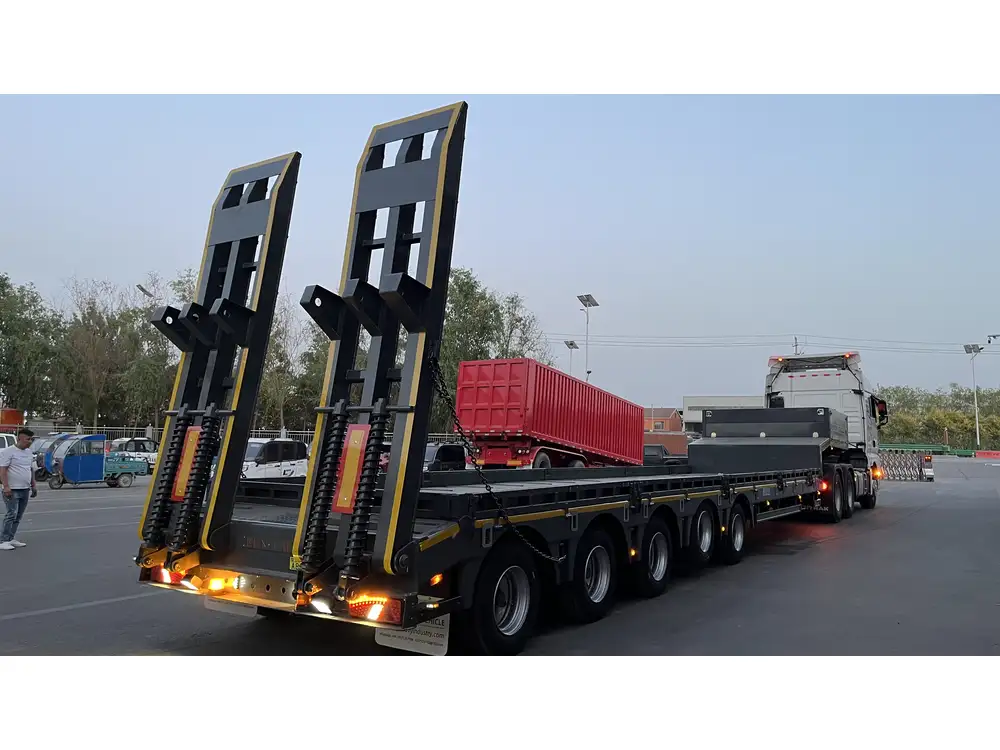When delving into the world of logistics and transportation, the terms “tractor” and “semi-trailer” frequently arise. Recognizing their distinct roles and how they interact is essential for anyone in the commercial transport industry, whether you’re a seasoned veteran or just starting. This guide seeks to unpack the intricacies and significance of these vehicles, ultimately equipping you with the knowledge needed to make informed decisions, navigate the complexities of freight transport, and optimize your operations.
What Is a Tractor?
Definition and Purpose
A tractor, in the realm of trucking, refers to the powerful vehicle designed to haul trailers and load. Often referred to as a “truck” or “semi-truck,” these vehicles serve as the front end of a tractor-trailer combination. The primary purpose of a tractor is to provide the power necessary to tow the attached semi-trailer, where cargo is stored and transported.

Types of Tractors
Day Cab Tractors
- Description: Designed for short-haul trucking, day cab tractors are equipped without sleeper cabs. This limits their use to routes where drivers can return home daily, emphasizing performance over long-haul comfort.
- Use Case: Ideal for local deliveries, urban freight transport, and regional routes.
Sleeper Cab Tractors
- Description: These tractors feature a built-in sleeping compartment, allowing drivers to rest and sleep during longer trips. This extended space makes them suitable for long-haul transportation.
- Use Case: Perfect for interstate trucking operations and freight routes that extend beyond a single day.
Heavy-Duty Tractors
- Description: Engineered for hefty hauls, heavy-duty tractors can pull significant weight and handle challenging road conditions.
- Use Case: Frequently used in construction and bulk freight transport.
Key Components
- Engine: The heart of a tractor, engines can range from 300 to over 600 horsepower, providing the necessary strength for heavy loads.
- Transmission: This component transfers power from the engine to the wheels, with options ranging from manual to automatic, each offering distinct performance benefits.
- Chassis: The sturdy framework that supports the tractor, designed to endure the stresses of constant hauling.
- Towing Equipment: Including the fifth wheel coupling, which secures the trailer to the tractor, ensuring stability and safety during transport.
What Is a Semi-Trailer?

Definition and Structure
A semi-trailer is an integral component of the freight transport system, characterized by its unique design: it does not have a front axle but relies on the tractor for support and balance. This segment of a truck-trailer combination is where cargo is stored and transported, making it an indelible part of logistics.
Types of Semi-Trailers
Flatbed Trailers
- Description: A flat surface with no sides or roof, allowing for versatile loading options.
- Use Case: Suitable for heavy machinery, construction materials, and oversized items.
Enclosed Trailers
- Description: Fully enclosed, offering protection from weather and theft; these trailers often have a ramp for loading and unloading goods easily.
- Use Case: Ideal for sensitive cargo like electronics, automobiles, and retail products.
Refrigerated Trailers (Reefer Trailers)
- Description: Equipped with temperature-controlled units, ensuring cargo remains at a designated temperature throughout the journey.
- Use Case: Perfect for perishable goods, pharmaceuticals, and temperature-sensitive items.
Tank Trailers
- Description: Designed to carry liquid materials, such as fuels or chemicals, these trailers often feature specialized valving and pumping systems.
- Use Case: Critical for transporting gasoline, oils, and other liquid products.
The Interplay Between Tractors and Semi-Trailers

Connection and Operation
The relationship between a tractor and a semi-trailer is characterized by a symbiotic design: the tractor generates the power, and the semi-trailer carries the load. Understanding how these components interact is vital for efficient operations.
Coupling Mechanism
The tractor’s fifth wheel coupling allows the semi-trailer to hook securely into place, providing a strong attachment that can handle significant weight during transport. Proper coupling ensures stability and reduces the risk of accidents.
Load Capacity
The combined weight-carrying capabilities of the tractor-semi-trailer configuration greatly influence logistics planning. Drivers and logistics managers must adhere to federal and state weight regulations, ensuring that gross vehicle weight limits are respected to avoid heavy fines and interrupt delivery schedules.
| Vehicle Type | Average Load Capacity | Typical Use Cases |
|---|---|---|
| Day Cab Tractor | Up to 80,000 lbs | Local deliveries, short hauls |
| Sleeper Cab Tractor | Up to 80,000 lbs | Long-haul trucking, interstate routes |
| Flatbed Semi-Trailer | Varies widely based on load | Construction materials, heavy cargo |
| Enclosed Semi-Trailer | Up to 45,000 lbs | Electronics, retail deliveries |
| Refrigerated Semi-Trailer | Up to 40,000 lbs | Perishables, pharmaceuticals |

Maintenance Importance
Both tractors and semi-trailers require regular maintenance to ensure safe operations and extend their lifespan. Key maintenance tasks include:
- Engine Checks: Regular oil changes, filter replacements, and performance diagnostics.
- Brake Inspections: Ensuring brake fluid levels are adequate and that pads are not worn down.
- Tire Maintenance: Monitoring tire pressure and tread to guarantee optimal traction and safety.
- Load Assessments: Ensuring that the trailer is not overloaded and that weight is evenly distributed.
Regulatory Considerations
Compliance with DOT Regulations
Transporting goods via tractor and semi-trailer falls under various regulations imposed by the Department of Transportation (DOT). Compliance ensures that safety standards are upheld.
- Weight Restrictions: Familiarizing oneself with weight limit regulations, which may vary by region.
- Inspection Records: Maintaining detailed logs of vehicle inspections and repairs.
- Driver Qualifications: Ensuring that all drivers have the necessary Commercial Driver’s License (CDL) and have completed required training.

Environmental Considerations
With increasing awareness of environmental sustainability, many in the logistics industry are looking to improve fuel efficiency and reduce greenhouse gas emissions. This endeavor may involve:
- Choosing Fuel-Efficient Tractors: Investing in modern engines that offer improved fuel economy.
- Implementing Eco-Friendly Driving Practices: Training drivers on strategies such as smoother acceleration and maintaining steady speeds.
Choosing the Right Equipment
Key Factors in Selection
When selecting a tractor and semi-trailer combination, several factors should be taken into consideration:
- Type of Cargo: Identifying the nature of the goods to be transported is essential in determining the type of trailer required, whether flatbed, enclosed, or reefer.
- Routes and Distance: Assessing routes and expected travel distance can impact the choice of tractor, as some engines are more suited for long-haul transport than others.
- Budget Constraints: Analyzing initial purchase costs versus long-term maintenance expenses aids in budget planning.

Performance Metrics
- Fuel Efficiency: Comparing fuel consumption rates, measured in miles per gallon (MPG), can highlight the cost-effectiveness of potential tractors.
- Durability and Reliability: Investigating manufacturer histories and warranty offerings aids in selecting robust models that withstand harsh conditions.
Conclusion
In the intricate tapestry of logistics and freight transportation, understanding the roles of tractors and semi-trailers is paramount. Emphasizing the balance of power and storage, these vehicles constitute the backbone of commercial transport. Their selection, maintenance, and operational efficiency can significantly affect cost, reliability, and service delivery.
By leveraging the insights provided in this guide, you will be better equipped to navigate the complexities of the transportation industry. Armed with knowledge about the functions, types, and considerations surrounding tractors and semi-trailers, you can make strategic decisions that enhance your logistical operations and drive your business toward success.
In an ever-evolving industry where efficiency and compliance are critical, ensure that every element of your tractor and semi-trailer setup is optimized for performance, longevity, and profitability. The journey toward superior logistics performance starts with understanding the fundamental elements at play, paving the way toward a more streamlined, effective transport network.



